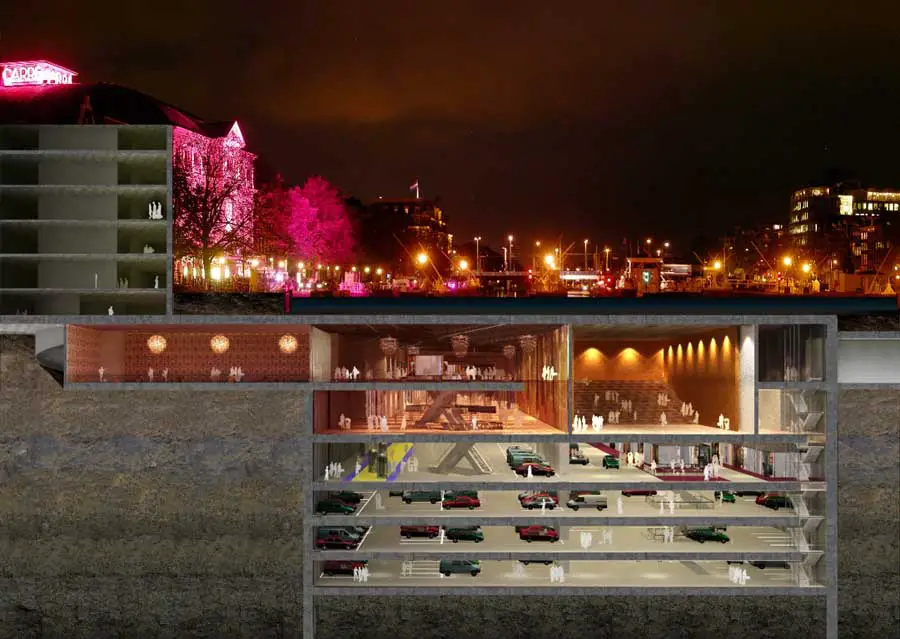
Thursday, December 15, 2011
Big Engineering 47 Expanding Cities Downwards

This proposal has been made for expanding Amsterdam downwards but presumably could apply to any city built on clay soil rather than rock, which certainly includes London and probably most of those built on river estuaries, which is most of them.
Architect Moshé Zwarts says ""There has always been a lack of space in the city, so what we are doing is building a city under the city by using a new construction technique, which will not interfere with street traffic."- by draining and then building under the canals....The "environmentalists " agree it is feasible and are against it so that is a strong strike in its favour.
The engineers say it is doable. "It is both feasible and sustainable, creating a city beneath the city is not futuristic, it is a necessity in this day and age." Zwarts says the geology is great for this. "Amsterdam sits on a 30-metre layer of waterproof clay which will be used together with concrete and sand to make new walls. Once we have resealed the canal floor, we will be able to carry on working underneath while pouring water back into the canals. It's an easy technique and it doesn't create issues with drilling noises on the streets."
"This scheme and its underlying drivers, fly in the face of every responsible principle of sustainability and current trends. The architects also claim that the proposal is CO2 neutral but when questioned by WAN, Professor Zwarts acknowledged that his calculations omitted the carbon generated by construction, which in a mammoth scheme like would take many decades to recoup, if ever.....That this project is technically achievable is not in doubt, but that does not justify its flawed concept."
It is unlikely that this will, currently, be worthwhile in smaller cities since it depends on a lack of affordable land for it to be economic. It fits Professor John McCarthy's suggestion that the problems of car parking can be solved by providing virtually unlimited parking spaces under the roads. and with the general improvement in technology of tunnelling.
The problem for Britain is that our engineering costs are dwarfed, around eightfold, by governmental bureaucracy costs. For this reason the cost of public projects has gone up 4% above the rate of inflation annually for 52 years, for reasons which no civil servant can, officially, explain.
Another example I recently found out about is the Thames Tunnel, a 34km sewage outflow tunnel (which is why it doesn't get discussed) from London which is costing £3.6 billion. This is £105 per km for something the Norwegians are doing at £4 m per km - probably it is reasonable that, cutting under London, it might cost more than in Norway but 26 times! .
However this is simply bureaucracy costs and could be ended at any time the political will is there. The engineering is clearly "doable".
PS I found this idea through this list of 10 megaprojects of which 10,9,6,4 are "renewable" based rather than economic, 8,5,2 & 1 are a close to things I have proposed, this is 7. ~3 - using genetically modified coral to save Venice and build in the sea is cool.
Labels: Big Engineering, Science/technology, Tunnels
Comments:
<< Home
Environmentalists preaching about "responsible principles and flawed concepts" is a a bit rich.Have they questioned their own principles and concepts to check if they correspond to reality, or just a convenient narrow view that excludes the many inconsistencies. - Sandy
Post a Comment
<< Home
